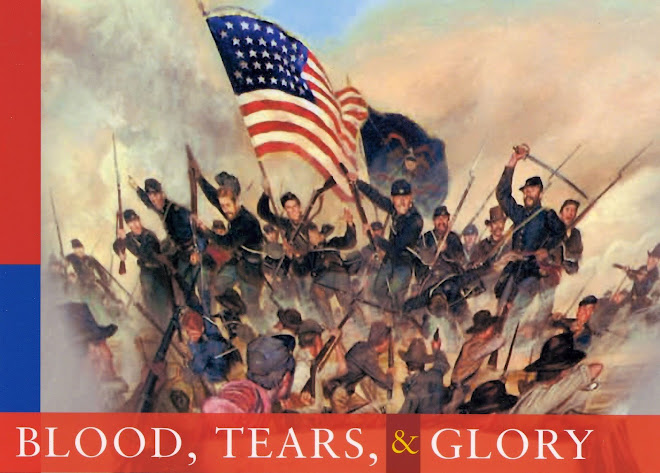
Critical Moments
Writers and tour guides all have their favorite “turning points” in the Civil War, so there are lots to choose from. But the “turning points” claimed are so portentous and deterministic that they demand almost impossible levels of proof. Less pretentious—and more realistic—are “critical moments,” events so clearly important that some effects can be reasonably inferred, without claiming they point to the war’s outcome.
There are far more critical moments in the Civil War than "turning points."
Two critical moments occur in the Western Theater after Halleck’s takeover on Friday, May 30, of the abandoned Confederate rail center of Corinth, Mississippi. With his massive force—100,000 or so soldiers, assembled from three separate Union armies—Halleck outweighs anything the Confederates could quickly assemble in the Western Theater. Forging ahead to deliver one great hammer blow to Beauregard’s ragged Rebels might crush Confederate hopes here once and for all. But on June 11 Halleck will give up his pursuit of Beauregard. The war will drag on. A critical moment lost.
However, in the first days of June an even more important moment occurs here, one that will prove to favor the Union side. It happens like this.
On Wednesday, June 3, William Tecumseh Sherman drops into Halleck’s headquarters to chew the fat and swap gossip, as soldiers of all ranks do. Halleck casually lets drop that Ulysses S. Grant— having asked for, and received, a 30-day leave—is leaving the very next day. Halleck claims to not know the reason why, which would make him the only senior officer not to know how Grant, as Sherman put it, “was chafing under the slights of his anomalous position.” It is hard to believe that "Old Brains" is that obtuse It is more likely he is jealous and distrustful of Grant and only too glad to see him go.
A startled Sherman hurries to Grant’s camp, still in the piney woods outside Corinth. He finds office and camp chests piled up in front of the general's camp, ready for a departure, with Grant inside his tent, tidying up his desk. Sherman asks why he is leaving.
“Sherman, you know,” Grant replies. “You know that I am in the way here. I have stood it as long as I can, and can endure it no longer.” He adds that he is going to St. Louis and, when asked if he had any business there, replies, “Not a bit.”
But Sherman, depressed and unsure of himself for so long, has been transformed by his success in command at Shiloh and has confidence to spare. He begs Grant to stay. “That single battle had given me a new life,” Sherman will recall in his memoirs, “and now I was in high feather; and I argued with him that, if he…remained, some happy accident might restore him to favor and his true place.”
Thankful for Sherman’s concern as well as the friendly advice, Grant promises to think things over. It doesn’t take him long. Later the same evening he writes Julia that he will not be leaving camp after all. “Necessity…changes my plans, or the public service does, and I must yield.”
The next day, Thursday, Sherman travels 14 miles northwest to Chewalla, Missisippi, to reconnoiter and try to salvage of some trains wrecked there and burned by the Confederates. On Friday, June 6, he receives a note from Grant saying that “he had reconsidered his intention, and would be remain.” Sherman quickly writes a reply: “I…am rejoiced at your conclusion to remain,” telling Grant that “you could not be quiet at home for a week when armies were moving.”
By coincidence, one of the great military confrontations in history is foreordained by events this week. Hundreds of miles to the east, Maj. Gen. George B. McClellan’s Union soldiers and Gen. Joseph E. Johnston’s Confederates are fighting to a draw at Seven Pines (or Fair Oaks) in Virginia. Johnston is seriously wounded on the first day of the battle and is immediately replaced by a man named Robert E. Lee. So far in the war, Lee has shown little promise of success on the battlefield. Grant has shown more, but at the moment he is at one of the nadirs of his career.
But in two years, thanks to critical moments occurring within days of each other in Virginia and Mississippi, Grant and Lee will become the two most prominent commanders of the Civil War. They will fight some of its last battles and help to bring it to a close. But not before many other critical moments have passed.
IT’S COMING SOONER THAN YOU THINK: April 12, 2011—less than 3 years from now!—will be the 150th anniversary of the outbreak of the Civil War. In 1861, April 12 was the day Confederates opened fire on Fort Sumter in Charleston Harbor.
Your suggestions, comments, and questions about this blog are always welcome. Address the author: Ohioan@bloodtearsandglory.com
For more information about the author and his newest book, please go to http://www.orangefrazer.com/btg






